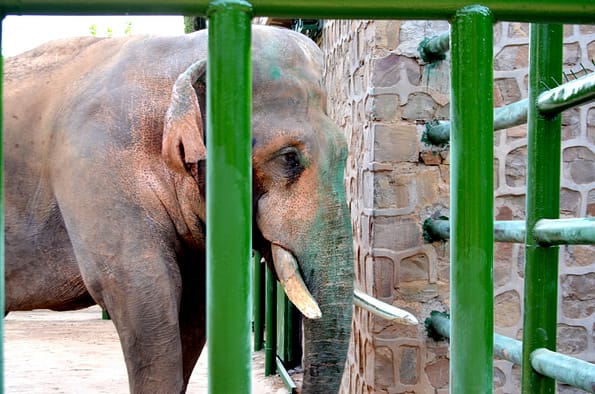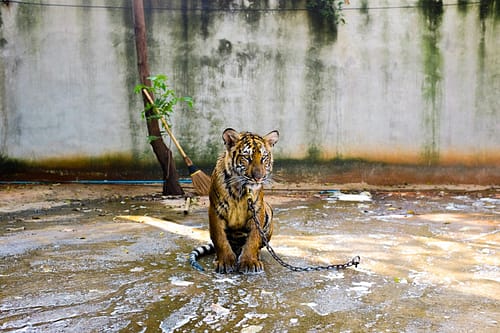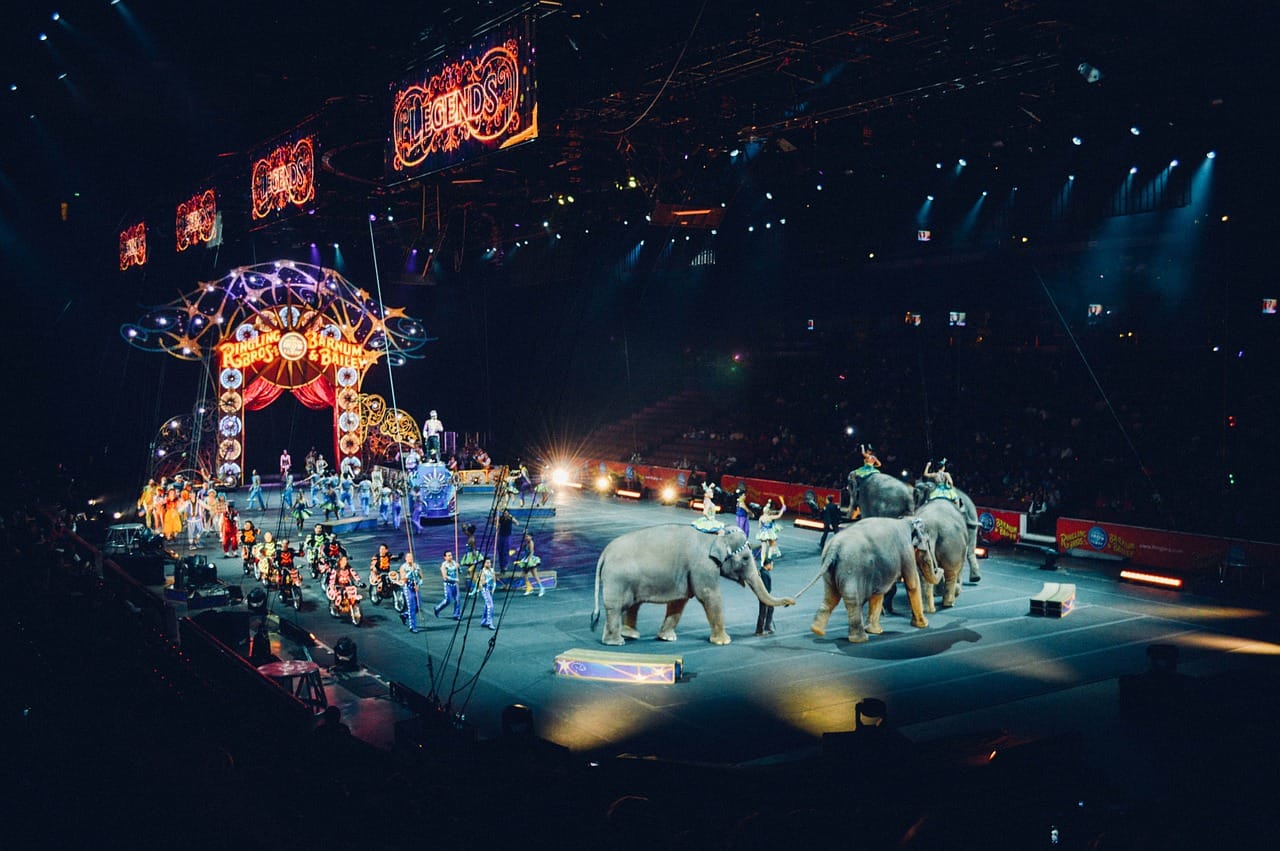When people think of a circus, usually they imagine bright lights, peanuts and cheerful animals jumping through hoops and balancing on pedestals. But the truth is much darker. The animals are only doing the tricks due to the fear of what might happen if they don’t. An example of this is of an elephant named Anne. During the off season of the circus, Anne was eating while she was being chained to the ground around two of her legs, when her carekeeper entered her enclosure with a pitchfork.
The man began to poke at the hay on the barn floor, and then suddenly lashed out with the pitchfork, while stabbing it into the elephant’s face. Anne flinched, but made no attempt to strike back as the man beat her over the head and then continued to kick her rear leg.
The surveillance tape showed the man coming back multiple times. In total, she was hit 48 times.
Anne’s story is one of countless more.

Peter Griffin via Public Domain Pictures
Although almost everyone can agree that this is no way an animal should be treated, it gets a little harder to draw the line for animals in captivity, such as zoos or aquariums.
When is animal care considered animal abuse?
Conservation
The main reasons animals are even in captivity, is for conservation purposes. There is a large number of species going extinct each year, anywhere between 2,000-100,000. Zoos can act as a way to combat this number by protecting a specific species from going extinct. The animals are then usually bred to provide a small foundation population. Without the efforts to save the endangered animals, there would be a lot fewer species alive today.
Education and Research
[perfectpullquote align=”right” bordertop=”false” cite=”” link=”” color=”” class=”” size=””]Being able to study animals in zoos where there is less risk and less variables means real changes can be effected on wild populations with far fewer problems. -Emily Temple[/perfectpullquote]
Another reason animals are in captivity is because they educate scientists about their habits, as well as the general public who can learn more about them. There is a big difference in watching an animal in real life instead of on television. You can interact with the animal by hearing it, smelling it, watching what it does in so much deeper depth and connection than on television. As well as education, animals are in zoos and aquariums for research. If we want to save the animal’s species as well as their ecosystem, we need to know how they live in terms of their eating, socializing, and mating habits. Although it is possible to research them in the wild, there is a lot less risk for anything going wrong that could affect the research.
Protection
Animals are provided protection while being in a zoo or aquarium. They don’t have to face the harsh reality of finding food and water in the drought months, that wild animals do. Also, elephants in captivity don’t face human conflict, where they could be potentially shot and killed. According to National Geographic, the wild elephant population in Africa is dropping about 8% each year. That is 27,000 elephants killed every year for ivory. Clearly, something needs to be done to protect the elephants in Africa, as well as the monkeys in South America, the Vaquitas in Mexico, and so many more.
But is captivity really the right thing to do?
Is it worth ruining the animals lives to possibly save their future generations?
Reintroducing efforts

via pxhere
The future generations or species still might not even have a chance. According to “takepart”, “if you ask leading scientists working in the field saving animals if zoos as a whole are doing enough for conservation, you’ll get an emphatic no.” Zoos are hardly successful at reintroducing the animals to the wild, according to Emily Temple at “colostate.edu“: “[zoos] consist of few animals that can’t sustain a proper breeding population”. because zoos cannot fulfill a proper species population, it shows that the conservation efforts may only be an illusion to get more tourists to come, allowing the zoos make more profit.
Morals
[perfectpullquote align=”left” bordertop=”false” cite=”” link=”” color=”” class=”” size=””]“People may come away awed by the animals … but [s]ubconsciously, we know it is wrong. We are watching suffering and exploitation.”-Philip Tedeschi[/perfectpullquote]
The welfare of animals, also known as their moral rights is a mix of their physical, mental, and social health. According to the University of Denver, It is undeniable that many species have complex emotional lives and cognition, have the capacity to feel pain and distress and to suffer, and, at the same time, experience joy, happiness and a sense of security. They have intense social relationships, intricate language and communication, and can experience trauma similarly to PTSD. In other words, animals have feelings similar to humans. So, imagine this: you thriving in your home as a young newborn, when all of the sudden you are separated from your mother and father, thrown in a cage that travels across the ocean, when you are put into another enclosure where you will live for the rest of your life. According to Freedom for Animals, that is the reality many animals still face today.

Corpse Reviver via Google Images
There is one single Federal law that protects animals, and is called the Animal Welfare Act. According to Michigan State University, The Animal Welfare Act is designed to “promulgate standards to govern the humane handling, care, treatment, and transportation of animals by dealers, research facilities, and exhibitors.” If there is only one act that promotes humane treatment for animals, it is obviously going to have loopholes. According to NAVS, “one of these is that [t]he Animal Welfare Act was not intended to regulate how animals are used for research purposes, but only to set standards for how they are obtained and maintained at a facility.” Basically, animals are only regulated during their day to day lives, not when they are in research involvement.
The question is, should we be more focused on respecting animals’ moral rights, or prevent extinction and promote conservation? I’ll leave that up to you. But all I can say is this: what is the point of life if you are going to spend it by being miserable, only to have a child who is going to end up doing the exact same thing?
Featured Image by: pxhere





What do you think?
Show comments / Leave a comment